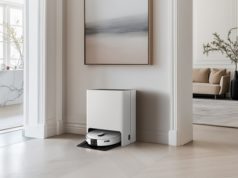Owners of Sony Bravia, Sharp Aquos and other Android powered TVs will soon be able to interact with devices via voice commands using Google Assistant.
Owners of Android powered TV’s will soon be able to interact with their systems using voice commands.
Google this week announced plans to bring its voice-activated Google Assistant to Android TVs in coming months in keeping with the company’s commitment to integrate the digital assistant technology in virtually all of its products over the next few years.
The integration will allow owners of Android powered TVs such as the Sony Bravia, Sharp Aquos and Xiaomi Mi to do things like search for TV shows, browse channels and play content from places like Netflix and YouTube using voice commands.
When Google makes Assistant available on set top streaming devices like the Nvidia Shield, owners of Android TVs will be able to do things such as controlling the smart lighting system in their homes via voice commands.
“No more typing or struggling to get to what you’re looking for,” said Sascha Prueter, and Gummi Hafsteinsson, Google’s director of Android TV and product lead of Google Assistant respectively, in a blog. “Just ask the Google Assistant for help and you’re off to the races.
Google’s plans call for the Assistant to become available on all Android TVs in the U.S. running the Android 6.0 Marshmallow or Android 7.0 Nougat versions of the operating system in coming months. The company has not disclosed when the digital assistant will become available on Android TVs in other regions of the world.
Google Assistant is similar to Apple’s Siri and Amazon’s Alexa. It is designed to give users a way to interact with their phones, apps, tablets, computers and other devices in an intuitive manner using conversational speech. The technology is a product of Google’s investments in technologies such as machine learning and artificial intelligence over the past several years.
When Google CEO Sundar Pichai announced Assistant last October he described it as technology that is central to the company’s efforts to better position itself in an increasingly AI-centric world.
The company has already integrated the technology into its Google Allo smart messaging app and more recently into its Amazon Echo-like Google Home voice-activated speaker. The latter integration enables users to check local weather conditions, make reservations at restaurants and shows or to conduct searches on Google Search via voice commands.
Going forward Google has said it will use Assistant to enable voice-command capabilities in many of its hardware and software products. As examples, Prueter, and Hafsteinsson pointed to Google’s plans to integrate Assistant into smartwatches running Android Wear 2.0 and Android power infotainment systems installed inside vehicles.
Google last month opened up the development platform for Assistant to third party application developers as part of its effort to allow more apps and services to be accessed directly through Assistant. The goal is to let developers create interfaces that allow users to interact directly or indirectly with their applications via voice commands.
For example, the developer of a food ordering application or a ride-sharing application can use the platform to build interfaces that enable interaction via Google Assistant.







